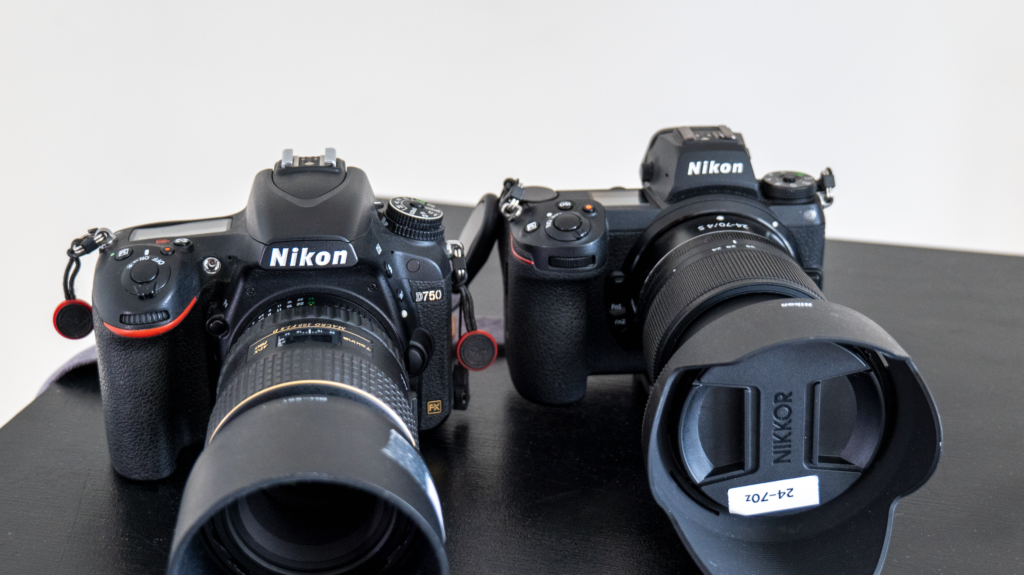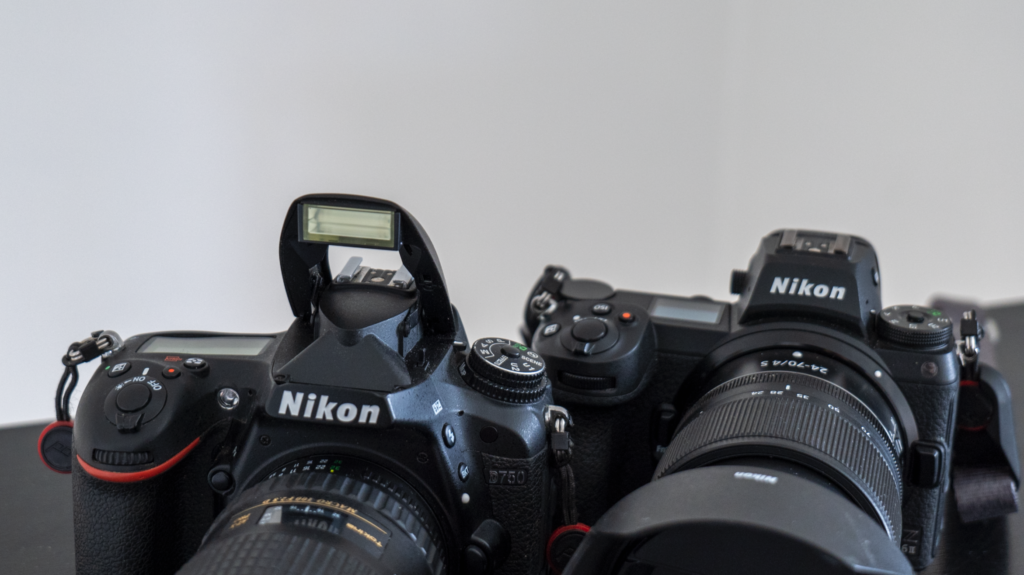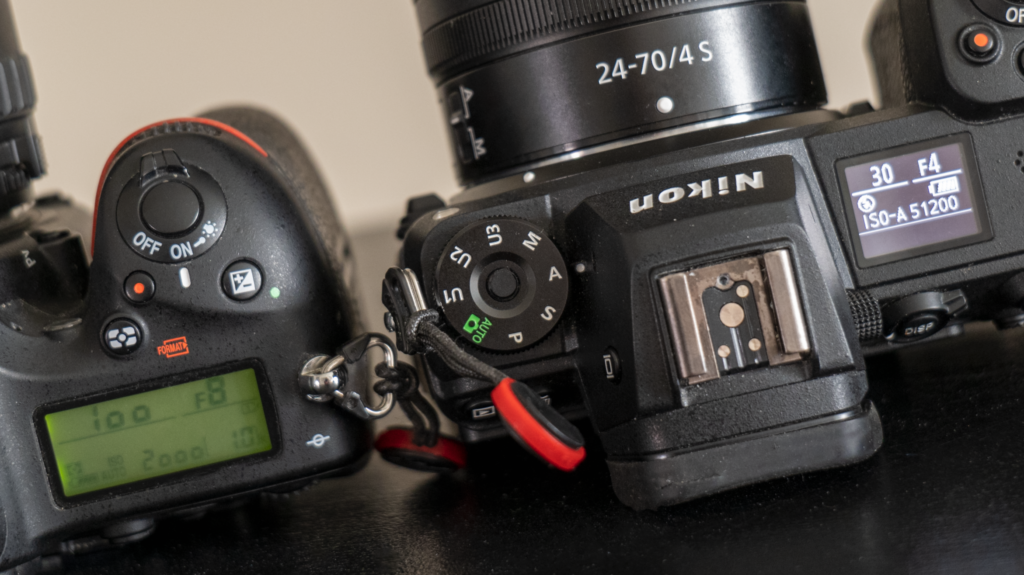The Nikon D750 was my first full frame camera and I love it! It has served as my workhorse and spare time camera from 2018 when I bought it and up till today. Along with my Tokina 100mm Macro lens, I have used it to shoot a lot of the images that you’ll find on this blog.
The D750 may not be as super solid as you will find if you get hold of say a Nikon D4 or D4S. Far from. Many that have tried a camera from Nikons professional (one digit) series will say that the D750 is a bit too light and that the built quality is not up to par with the pro series. And it is true.
But if you are not a photojournalists putting your camera through hell and high water on a daily basis, you probably don’t need that level of build quality. The D750 has been with me on outdoor photography many times in brutal weather, and it has stood the test of time as far as I am concerned. Everything still works on the camera – no failures when it comes to buttons / dials or internal mechanics / electronics.
And then what I find the best part: the D750 is so easy to use. If you speak Nikon, you will find at home with the D750 right away. It is a camera that does exactly what you ask it to, and it does not talk back. You can read more about why I chose the D750 back in 2018 right here.
Into the mirrorless era
Much has been written and said about the transition from DSLRs to mirrorless cameras. And I think this debate will go on for a long time. I have no intention to add to this debate, but will try to give you some observations that I have made working with both the Nikon D750 and the Nikon Z6ii. You can find my general observations about the difference between DSLRs and mirrorless cameras right here.

Glass and mount
When Nikon entered the mirrorless scene, they took a big decision and abandoned the good old trusty F-mount! The F-mount has been with us since the earth cooled down, and it was probably not an easy decision for Nikon to make. But I guess the reckoned that going mirrorless was also a “once in a millennium” chance of improving the mount. They did develop an FTZ adapter, but be aware that for all the F-mount glass with mechanical focus, i.e. where it depends on a focus motor in the body, is now suddenly manual focus!
Nikon argues that the new Z-mount with reduced flange distance improves the image quality, especially for wide lenses. I don’t know if this is true, but what I do know is that Nikon also took a deep breath and redesigned their lenses for the new mount. And this has been the central criticism of Nikons mirrorless cameras: the lack of lenses. But that was an issue in the beginning more than it is now – other vendors like Sigma are joining the party and deliver lenses for the Z-mount.
If you read reviews of Nikon lenses for the Z-mount, you will find that the lenses for the Z-mount is a new level in quality. Is this because of new lens design, new mount or smaller flange distance? I really don’t know. But I can see that something has happened for the better.
The question however is: Do you need the higher lens quality? My answer is: probably not, unless you shoot astro photography or some other line of business where resolution and micro contrast is of the essence. You can get say an 85mm AF-S lens for the F-mount and it will produce images in professional quality and your clients will be happy as can be, provided that you as photographer know your line of business.
Prepare to pay for the glass. Z-mount glass is good, but it is also reflected in the price level.
Add to this the price for the Z-mount glass: it is expensive. We have gotten used to the vast amount of used glass for the F-mount, and the fact that you often on a flea market can find dirt cheap glass of good quality that you can put on your DSLR and it works like a charm. New good glass has always been expensive, so it is perhaps not fair to compare to the used market for F-mount, but it is very real when you compare the F-mount and the Z-mount. So of you plan to go mirrorless, prepare to pay for the glass.
Your AF-S lenses with built in focus motor will work directly on the FTZ adapter, and that is probably the good compromise in terms of price point. If you use older glass like AF and AF-D, be prepared to focus manually!
Video
Video capabilities is where cameras have developed the most the last 10 years. This is also where my trusty D750 starts to feel old: it has no 4K option. If you are not a hybrid shooter, then this may be less important to you. For me, shooting a lot of video on the Z6ii also, this is important, as 4K is important to me. We are in personal preference territory and some will be happy shooting video at 1080p, and in that case the D750 can get the job done. But I never use the D750 for video anymore.

Unfortunately neither the D750 nor the Z6ii has a fully articulating screen, which is important if you need to frame precisely, e.g. overhead shoots or walk and talk videos. I miss the fully articulating screen and had hoped to see this as an improvement on the Z6ii, but no. Strange actually, as my Nikon D5600 from way back when had a fully articulating screen!
Speaking of video, the viewfinder on the Z6ii is a small TV screen! What the sensor picks up is live transmitted to a small screen that sits where the optical viewfinder used to be. So you are in permanent live view mode! Some absolutely hate this and want to stay with the optical viewfinders – I am not one, and I think the electronic viewfinder in the Z6ii works very well, also in low light conditions. And then the ability to zoom in, in the viewfinder, especially for manual focus, is a thing I find hard to miss when I go back to the D750 after shooting with the Z6ii.
Shooting experience
In the beginning I was not happy shooting with the Z6ii. Nikon has clearly re-designed the user interface and much more is now put into quick menu items at the expense of physical buttons. You can see this when you look at the front left of the Z6ii – the buttons have all gone and there are only buttons for the right hand to use.
The shortcut for formatting the memory card has also gone, along with the physical selection of drive mode. It is all selected via menus now.
I like the design, with dedicated buttons for things you select often, better. I really miss the ability to select focus mode via a button or format the memory card via a shortcut, but again, this is very much personal preference territory. I do notice however, that Nikon on some of the more expensive ML cameras seem to lean more towards their older designs.

Otherwise I find ergonomics great with both cameras. I have big hands and need a deep grip which both the D750 and the Z6ii features. And the buttons and dials are easy to use on both cameras, not much to notice there. The only thing that I miss when going from the D750 to the Z6ii is a flash! Call me crazy, but in a pinch I sometimes use the built in flash, and I find none on the Z6ii. Not a biggie, but a difference I notice.

The top LCD has changed so that it now features a white on black (or black on white) text instead of the good old green light we’ve known for decades. I do find the Z6ii a bit easier to read, but it is an improvement that is not very vital if you ask me.
What I do love about the mirrorless Z6ii is the ability to zoom in both in the viewfinder and the rear LCD, in combination with focus peaking highlights. When you shoot with a manual focus lens, these tools are a great help if you ask me, but also when you shoot with AF! You can let the camera focus automatically for starters and then you can grab the manual focus ring to override auto focus and get help from peaking highlights. For me, this is one of the areas the Z6ii really changes the shooting experience and I miss these features every time I return to the D750.
Another thing I miss is the ability to zoom and pinch on the touch sensitive screen – when you come from an iPhone you expect this to be the standard. Not on the D750; the + and – buttons on the camera needs to be engaged to zoom in and out.
Focus
When it comes to the focus system, the DSLRs have matured this technology over many years and many iterations. My Nikon D750 can see in the dark! When I do low light photography with a fast lens, it is amazing how the camera is able to focus both fast and precisely.
I am not impressed by the focus system in the Z6ii. My favourite example of a focus system that does not work is when I put the 105mm macro z-lens on the Z6ii and try to shoot in less than optimal light conditions. This is where I get the sad whale song! The lens hunts and hunts and passes where it should obtain focus several times! Until I get fed up and override with manual focus. That NEVER happens with my D750 and the 100mm Tokina lens – it just locks on focus every time. I have noticed that updates to the software has made the Z6ii perform better and better for each update, and maybe it is a question of time before new firmware updates will make optimal use of the computing power in the dual Expeed processors. But for now, I am not impressed by the Z6ii focus system.
When that is said, the ability to move the focus point to ANY point on the screen is a blessing with mirrorless cameras, and every time I return to the D750 I feel limited by the “centre only” focus points. Yes, I can focus, lock and recompose, but when you get used to both framing and focusing in one go, you really don’t want to go back. I miss this freedom every time I shoot with the D750 (or the D700 or the D4 for that matter!).
I use eye detection and animal detection very little, but the few times I have used it, it has worked really well. If these things are important to you, this could be a strong argument for the Z6ii. I would imagine that if you shoot portraits from 9-5 and need to come home with tac sharp keepers every time, the eye detection capabilities of the Z6ii is a blessing.
Sensor and image quality
I guess that you would expect miracles in terms of the image quality jumping to a 6 years younger camera, right? Not so much. If I put my 16-35mm AF-S lens on the D750 and compare it to a shot with the same lens on my Nikon Z6ii with the FTZ adapter, I cannot really tell the difference! But maybe not a surprise, as the sensors have roughly the same resolution.
The Z6ii has a back side illuminated sensor (BSI) and technically that should give better images, as less light is blocked by wiring and hence the signal should be stronger. In terms of dynamic range and the like from the spec sheet, the Z6ii is superior to the D750. However, in my kind of shooting (mainly outdoor photography) I have never noticed the difference. I am sure that engineers in controlled environments can measure a difference, but the difference has not been big enough for me to notice. I think it is because we are comparing very good to very, very good.
The Z6ii comes with a IBIS sensor. I do notice the effect of the stabilisation and I have shot at 100mm handheld down to 1/20th of a second with decent results. But I must admit that I seldom use it and don’t really miss it in the D750. And I always forget to switch the IBIS off when doing ICM photography!
So in summary, when I use the same lenses on the two cameras, I can hardly see a difference. Only when I mount a Z lens on the Z6ii, I notice a difference. Please do not put more into this than needed – it is just one photographers opinion!
Summary
Before I conclude, let me underline that this is just one photographers opinion, and that your shooting requirements and personal preferences probably differs from mine. So see this as a small voice in the debate, and make sure to listen to many voices before you choose between the cameras.
If you plan to shoot with f-mount glass only, then you will not see much difference in terms of image quality between the D750 and the Z6ii. You will get some nice features in the Z6ii that I absolutely love, like:
- focus peaking highlights
- viewfinder zoom
- focus points all over the place
- touch sensitive rear LCD
And a few things I do not use that much:
- 14 fps (vs 6.5)
- IBIS
- Eye and animal tracking
- 1/8000th max shutter (vs 1/4000th)
- Focus shift shooting
I doubt that these things are enough to warrant the move from D750 to Z6ii, but I let you be the boss here – only you know if these features are important to you.
The D750 is still a very capable camera. And it comes with a built in flash the Z6ii does not have, and if you use the flash lightly, the batteries of the D750 will last way longer than those of the Z6ii. If you are used to the classic Nikon DSLR design with many dedicated buttons for operating the camera, then the D750 will be right up your alley, whereas the Z6ii will feel more like a computer you operate via menu systems. And when shooting in low light, the focus system of the D750 will make mincemeat of the Z6ii.
I will say that if you are a hybrid shooter and need 4K, then the D750 is not able to deliver. In that case, I think there are good reasons to move to the Z6ii. And if you plan to buy some of the expensive Z-mount glass, then you will lift your technical image quality. If that is your ambition, then this could be another reason to select the Z6ii over the D750.
Video link
Related reading
Nikon Z6ii vs Z6 – Which one for you?
